FRIDAY GOOD NEWS THREAD:
how about some positivity?
Here's a brief overview of state of Covid in UK right now.
TLDR: pretty good, couple of things to keep an eye on. 1/13
how about some positivity?
Here's a brief overview of state of Covid in UK right now.
TLDR: pretty good, couple of things to keep an eye on. 1/13
Case rates are below 50/100,000 people/week in all nations (orange), dropping from prev week (grey) and approaching levels last seen Sept 1 last year (green). 2/13 
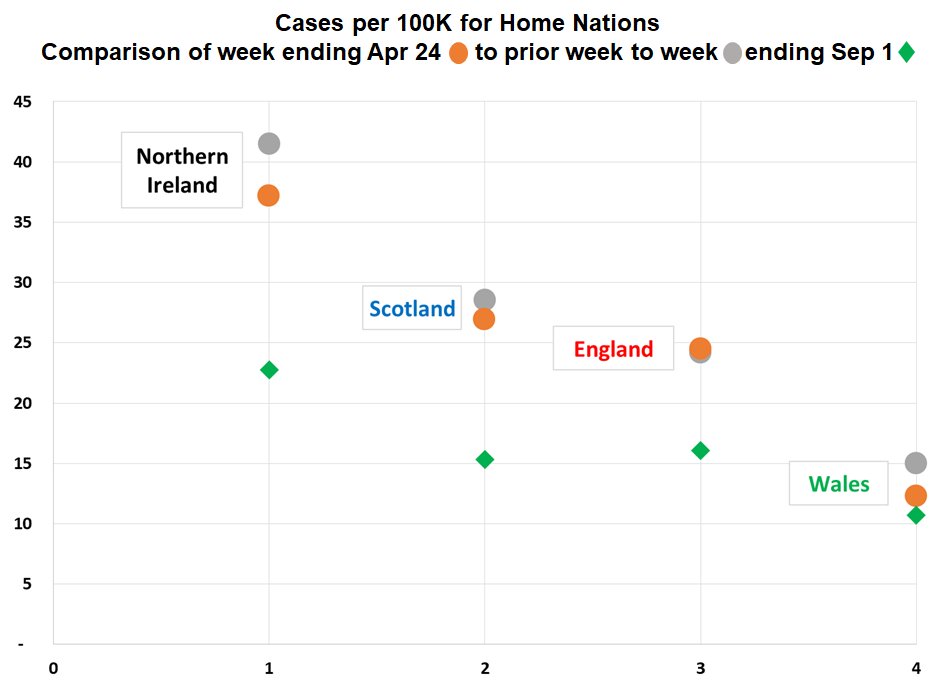
England is the flattest in terms of case rates and this is reflected regionally (orange and grey dots close together). Yorks & Humber still highest region, confirmed by the ONS infection survey too. 3/13 

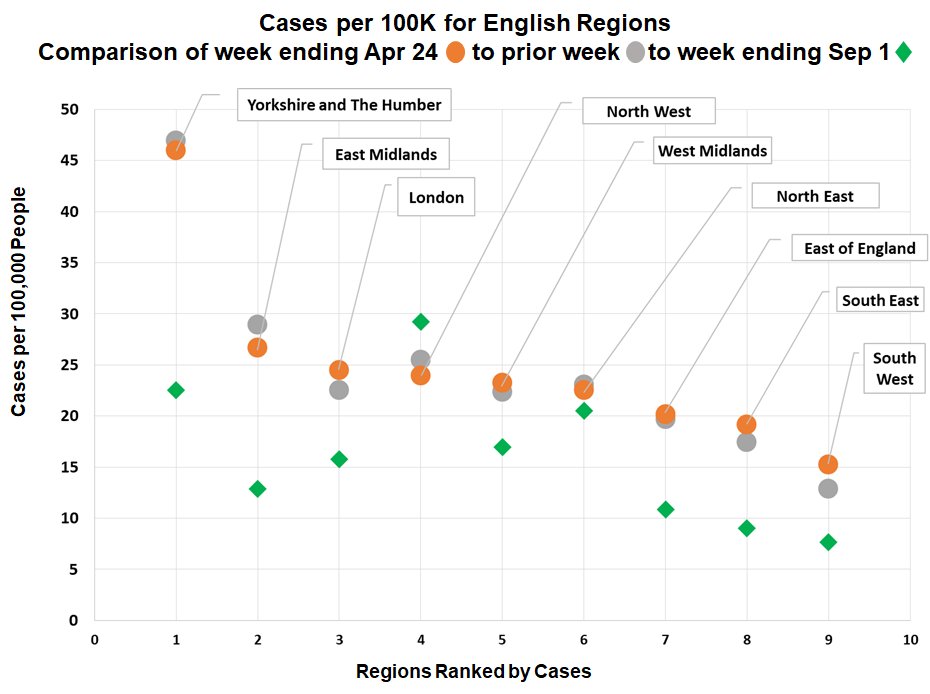
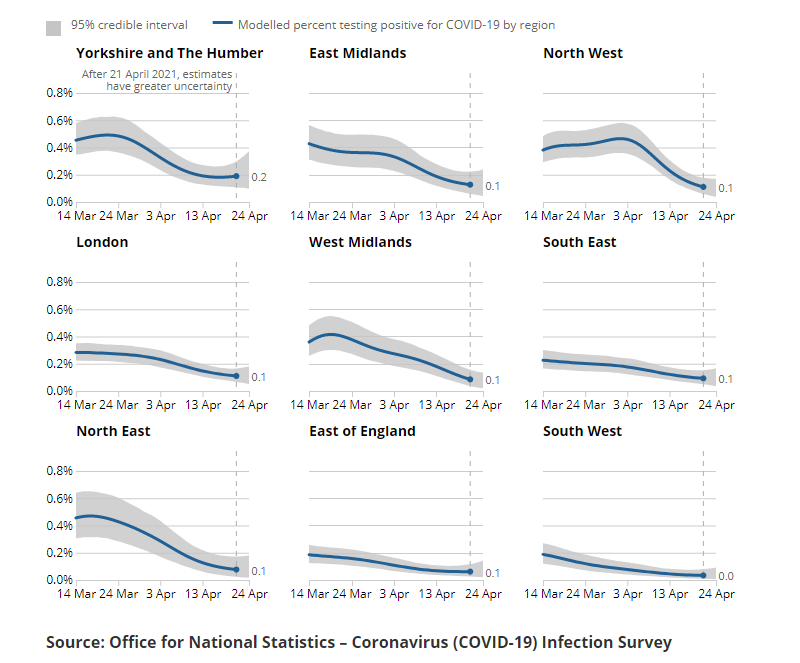
One thing to note is that although all positive LFD tests are now encouraged to get confirmatory PCR, about a third of cases are now positive LFD without confirmation. 4/13 
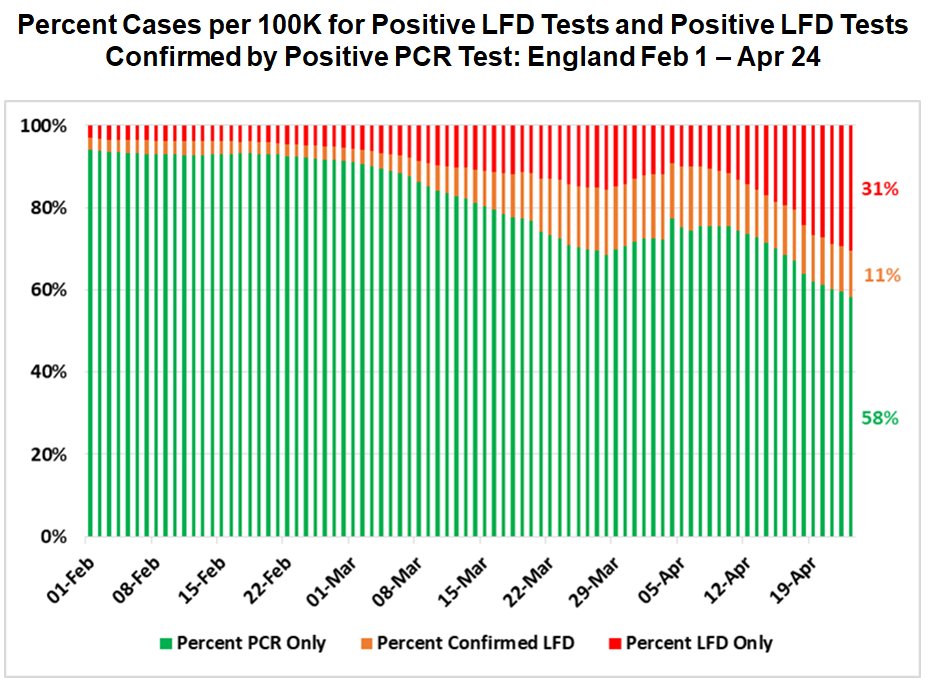
Cases by age are also flat or falling which is good news. This chart is from the ONS infection survey data so is not affected by whether someone has symptoms or changes in LFD test numbers.
All good but note only covers a few days of summer term.
Case data also flat 5/13

All good but note only covers a few days of summer term.
Case data also flat 5/13
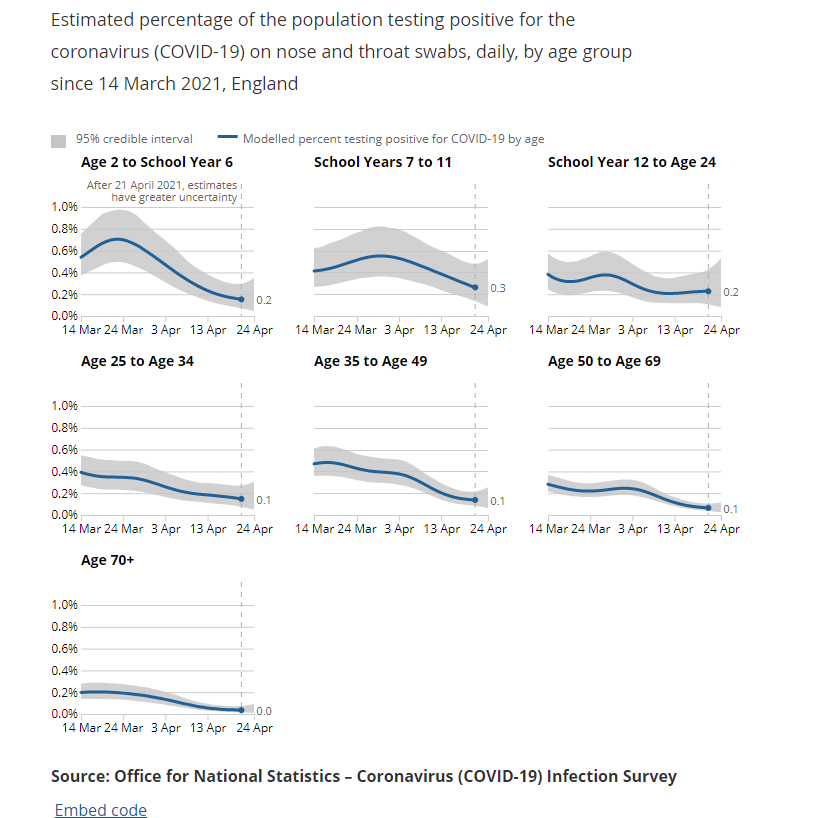
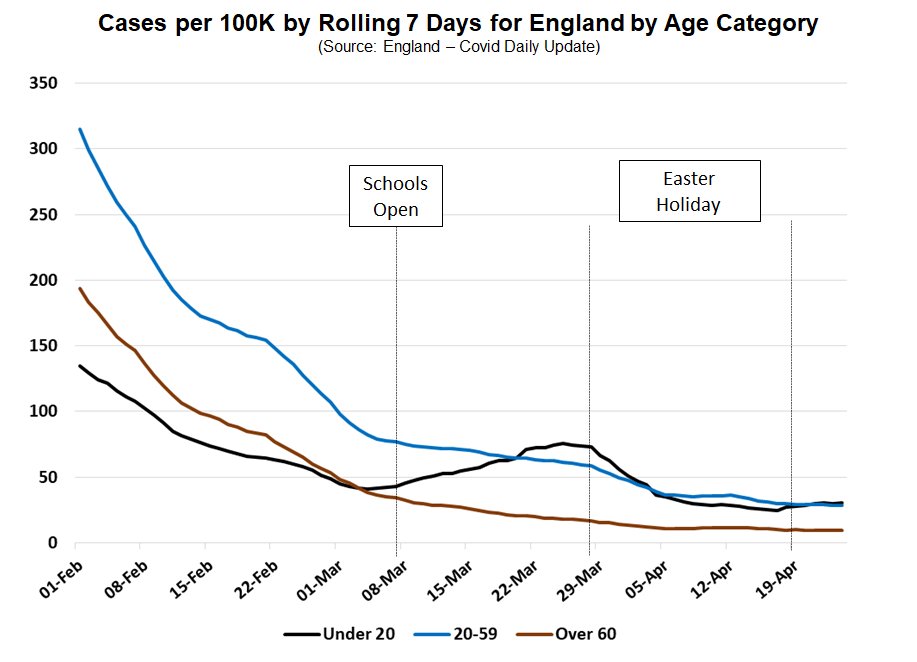
So great news that all going in right direction - so much of a better picture compared to where we were a few months ago and also where much of the rest of the world is now.
Couple of warning things to note... (wouldn't be me without some warnings!) 6/13
Couple of warning things to note... (wouldn't be me without some warnings!) 6/13
Firstly, the impact of deprivation has been stark for the last 8 months - Imperial REACT study shows that if anything the disproportionate impact is larger when prevalence is lower. 7/13 
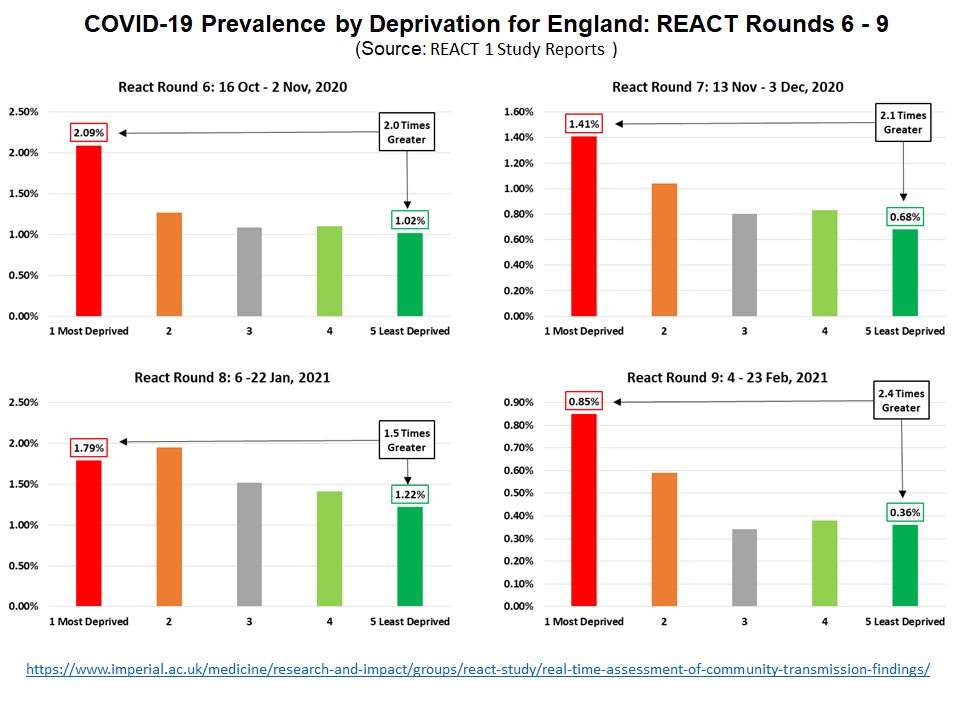
Secondly, while overall vaccination is great with 62% of adults having had 1 dose and 26% 2 doses, there are (obviously) differences by age. 8/13 

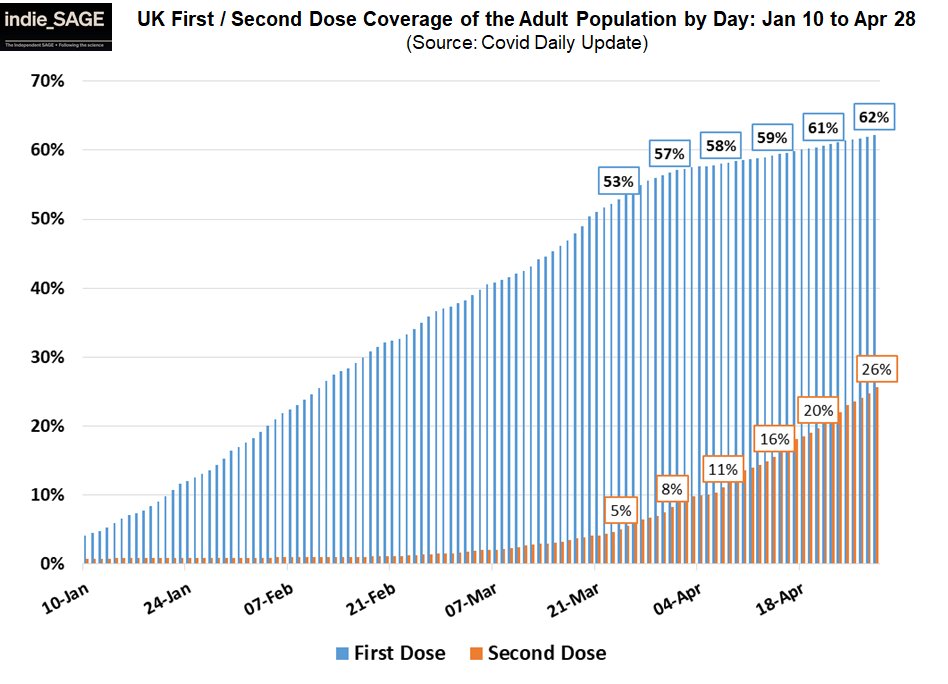
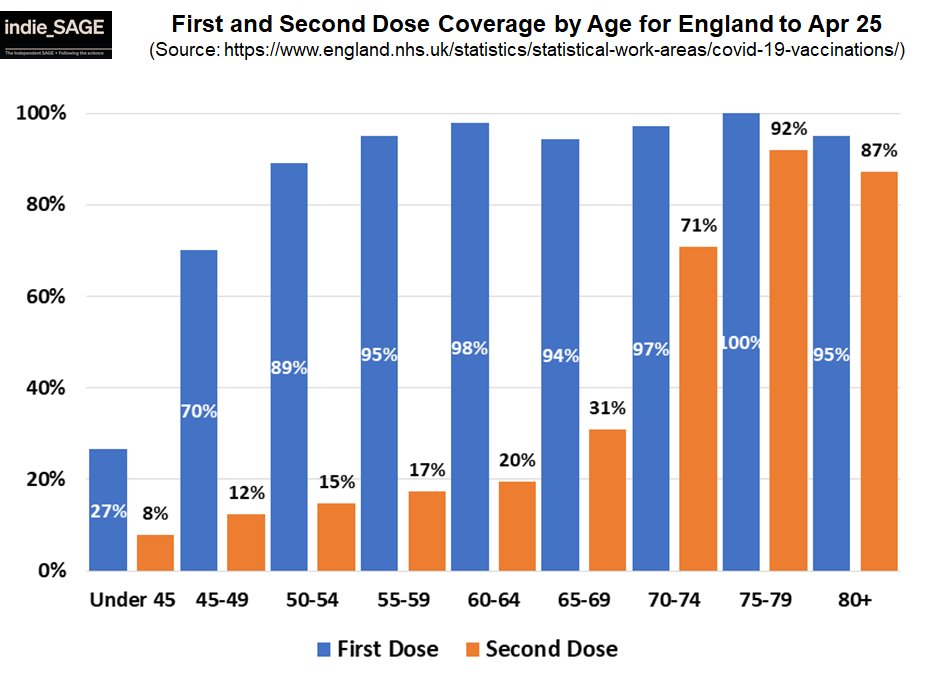
and these differences have also translated (naturally) into presence of antibodies (which arise either from vaccination or from previous infection).
ONS released its latest population antibody survey today. 9/13
ONS released its latest population antibody survey today. 9/13
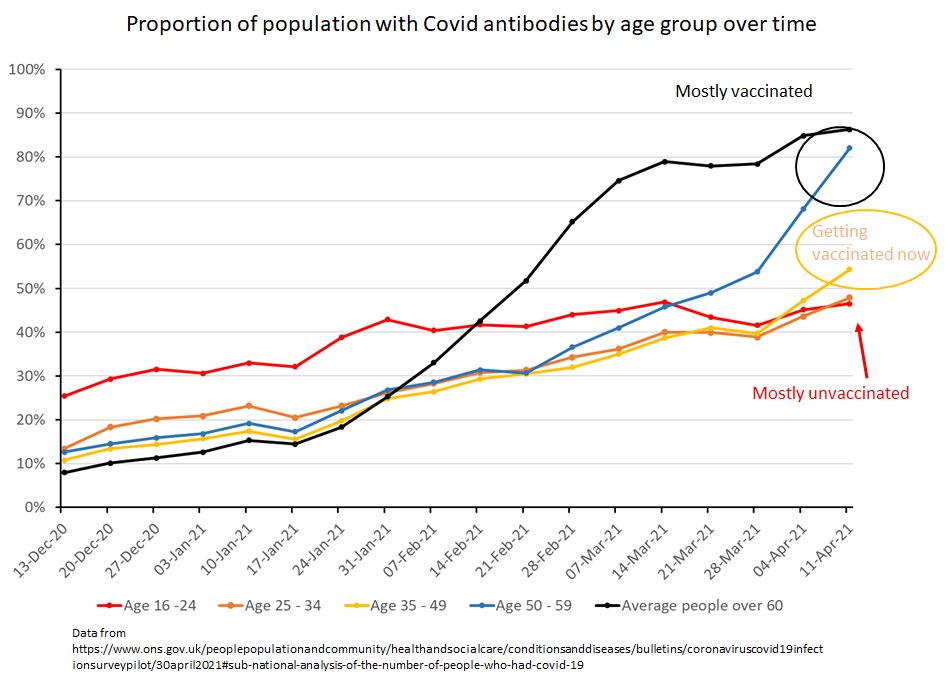
So roughly half of people between 16 and 34 don't have any Covid antibodies, maybe 8 million people... (plus 11 million children who've not been vaccinated, although some will have antibodies through prev infection). 10/13
Having so many people with some immunity will do a great deal to slow down any spread as we open up, but might not be enough to keep R<1 (which is what SAGE is worried about after June).
Adding better contact tracing, ventilation etc could keep R<1 + continuing to vax. 11/13
Adding better contact tracing, ventilation etc could keep R<1 + continuing to vax. 11/13
Finally there are variants. These remain the biggest medium term threat to our vax programme and we need to stay on top of them here.
I did a thread on this earlier
PHE last week showed likely increase in variants, particularly in London . 12/13
I did a thread on this earlier
https://twitter.com/chrischirp/status/1387898640304332803?s=20
PHE last week showed likely increase in variants, particularly in London . 12/13
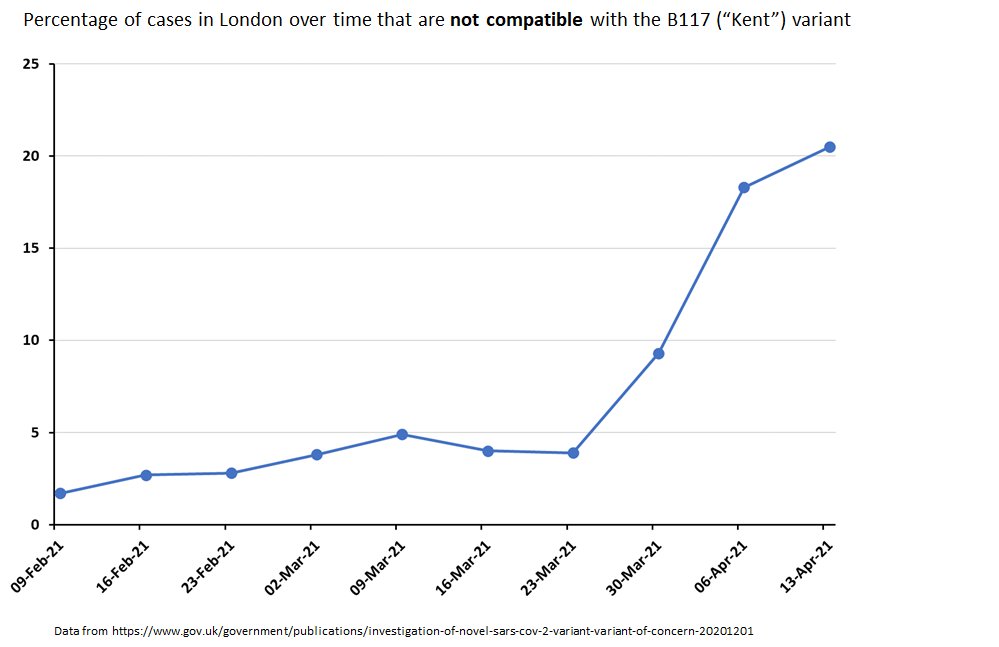
That said, cases in London very low and this increase in new variant compatible cases does not seem to be increase overall case numbers so far.
So overall - pretty good news! 13/13
PS thanks to Bob Hawkins for many charts. @Kit_Yates_Maths dives into the data in more detail
So overall - pretty good news! 13/13
PS thanks to Bob Hawkins for many charts. @Kit_Yates_Maths dives into the data in more detail
• • •
Missing some Tweet in this thread? You can try to
force a refresh























